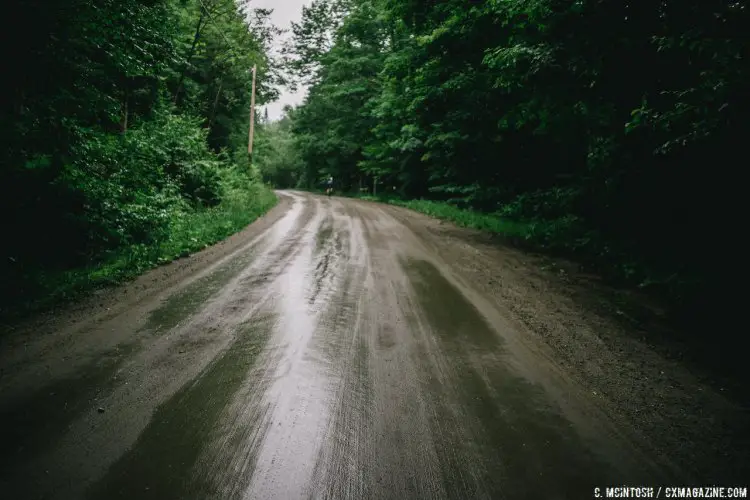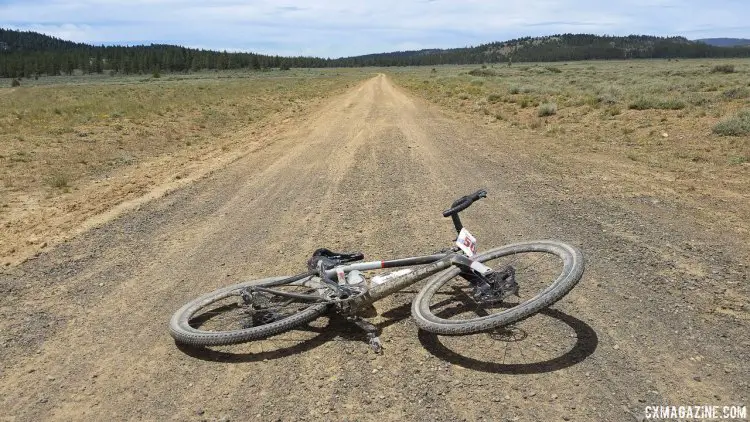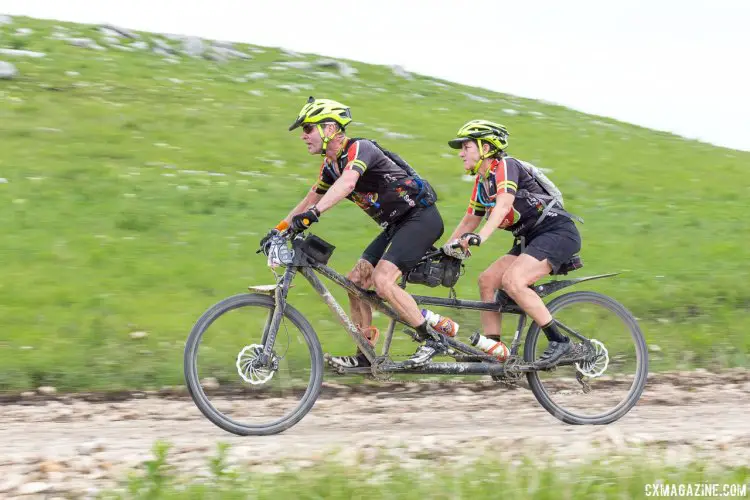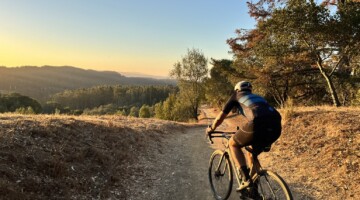by Kata Skaggs
As gravel riding has become more popular, I have gotten more questions about training for gravel rides from my clients. Although I cannot necessarily prepare them for all the rigors of riding on the sometimes rutted, never flat roads, I have developed some advice over the years, some of it based on my personal training, that can help prepare for physically challenging gravel rides.
As a coach, I tend to leave bike and tires choices to the experts—”Dude, do you run a 38mm or 40mm tire?!”—but I do think one of the great appeals of gravel riding is whether you choose a mountain bike, gravel bike or ’cross bike, it is the right choice for the job. If you are still on the fence about venturing out to do a gravel ride, probably my best coaching advice is: do it! The experience is well worth it and women and men of all ages can get out and ride gravel with little more than a bike, some water and a desire for adventure.
Once you have made the decision to do a gravel ride and have chosen a bike, I would guess you have more questions that hopefully I can help with. Whether you are doing 50, 100 or 200 miles of gravel grinding, the principles I lay out here should help, no matter how much time you have to train.
Specificity
Many of us have ridden or even raced a road bike, we may have raced mountain bikes, we may be familiar with one, both or none. Gravel riding combines the two and takes us to a new level of technical awareness since riding many bikes on gravel is practically riding a road bike on dirt, and this is exactly what it feels like!
I’m a big believer in training on the bike you will be racing on. I recommend training with your gravel bike on dirt roads at least once a week. No matter what distance you are training for, getting that off-road experience will help you feel more comfortable and adapt to the challenges of gravel and dirt roads.
Three Workouts for Success
I believe you can effectively train for a gravel grinder using three types of workouts. I have seen clients of all levels have success when they incorporate these three workouts every week. Although not required, I prefer them done back to back to accumulate fatigue before you allow your body to recover before starting the next three-workout cycle. By doing so, we give the body an opportunity to understand how to work under fatigue and distress.
Day 1. The sweet spot workload day (in the range of 83-97% of Functional Threshold Power). This workout works your body for specified durations followed by specified rest. For example, starting with 3 x 5 minutes of sweet spot (5 minutes on, 5 minutes off, totaling 15 minutes of work) is a great beginning point for any athlete. More experienced riders can start with more, but for newcomers, I think it is important to start simple. You then increase the duration of the sweet spot intervals and/or the number of intervals you complete by 10-20 percent each week until two weeks before your target event.
Day 2. Your muscular endurance day to build strength on the bike. This is your hill day, specifically working on hard, steep inclines and long duration hills. I recommend staying seated to work on pedaling efficiency under hard workloads. A sample workout here would be 2 to 3 hill repeats lasting 7- to 10 minutes with a recovery of 2 or 3 minutes between.
The goal of these workouts is to put stress on your legs and work at making you efficient with a full, fluid pedal stroke. As the training plan progresses, the hills get steeper, the repeat intervals get longer and the number of reps you do increases. Progress 10-20% throughout the training plan until two weeks before the event.
Day 3. Your endurance ride. Ride for as long as long as you have time for. Your goal is to be on dirt roads and terrain similar to what you’ll be racing on. This is easy for me living in Prescott, Arizona, but I understand you may have difficulty finding accessible gravel roads in some part of the country. If you are in the latter boat, I always recommend getting creative.
The goal here is to ride at your endurance pace, gradually increasing the time to about 80% of the duration you anticipate it will take you to complete your target event. You’ll want to hit your longest ride about two weeks out. If you are time-crunched, I would recommend figuring out what the longest pre-event training ride you can fit in is and working back from there using the 10-20 percent per week increase rule.
Mental Attitude
Things come to people who want it and work for it. You must give yourself a purpose, the purpose of completing a hard day on hard terrain and sometimes in uncooperative weather conditions. If you are able to find purpose, then your training has a better chance at being successful, and ultimately, you’ll be standing at the start line, ready to go, with a smile on your face.
You will experience ups and downs training for an event of such magnitude, and there will certainly be highs and lows during the event. I always feel that if you have consistently put forth at least 85% of your best effort, success is inevitable. Don’t get caught making chronic excuses as to why you can’t do something. Instead, focus on positive thoughts of why you want to accomplish what you’ve set out to achieve.
Creating a plan and committing yourself to your workouts even on tough days can help keep you on track for completing your training and getting you to race day feeling ready.

A positive attitude will have you ready no matter what conditions Mother Nature throws at you. © Chris McIntosh / Cyclocross Magazine
Nutrition
During your ride, your body will be accumulating fatigue and stress and burning a lot of energy. Treat it right by putting the right things in it, and you’ll feel your best through your training plan and in life. You need to make sure you are consuming the number of calories you burn on a daily basis, and you also need to pre-plan your training days with what you will need for the duration of the workload ahead of you. I recommend clients plan and experiment with fuel sources during training to help dial in nutrition for event day. This is the best way to make sure that your body will digest effectively what you give it.
For example, are you lactose intolerant? Don’t fill your bottle with powders containing whey products! Do you know how much water and electrolytes you will need per hour? There are good things to understand so you can train and race to your greatest potential. Quite simply, your body just cannot work for you if it’s not properly fueled. This is an endurance sport—you’re out there for long periods of time—take care of your body by making sure you eat foods it can easily digest and get the fuel you need.
[Editor’s Note: See Chris Mayhew’s recent Training Tuesday for more on cycling nutrition]
Active Recovery and Sleep
My last piece of advice is to always manage your recovery cycles. No matter how hard you push your body, you will not experience fitness gains without pulling back and taking time to rest. The body enjoys full days of rest combined with active easier days that include spinning casually, going for a walk or jumping in the pool (if you are lucky enough this time of year). My clients, whatever sport they may do, experience impressive gains from incorporating easy recovery activities into their training programs.
The body also needs a certain amount of sleep to fully allow for fitness gains. How much rest the body needs, whether active recovery, full days off or sleeping, is particular to each athlete, so be true to yourself and take rest when you feel it is necessary.

Getting enough rest is a very important part of training for endurance events. 2015 Lost and Found gravel race. © Cyclocross Magazine
Good Luck
If you are new to gravel riding, I wish you the best in your exciting new adventure. If you have some gravel roads under your tires, I hope you have still learned a thing or two from this column.
Last year, I put my advice to the test training for the BC Bike Race, which is a seven-day stage race in Canada. I used the Chino Grinder event in Arizona and my training leading up to it to prepare for the endurance aspect of the race, and in the end, got the results I was hoping for at the BC Bike Race.
I fully believe that if you understand and incorporate the above points of discussion, you too will find success in your gravel grinding adventures.
Kata Skaggs (coachkata.com) is a USAC Cycling Certified and IMBA Level 1 coach who lives in Arizona. Drawing from over 16 years of experience on the trail with mountain biking and trail running, she started at the beginner level and advanced to pro cross country riding and endurance riding. The skills and knowledge gained over the years combined with her true passion to help others succeed has led her to the life of coaching.
Stay tuned for a follow-up column with more specifics on tackling your first long gravel ride. For more training advice, see our Training Tuesday archives.





























